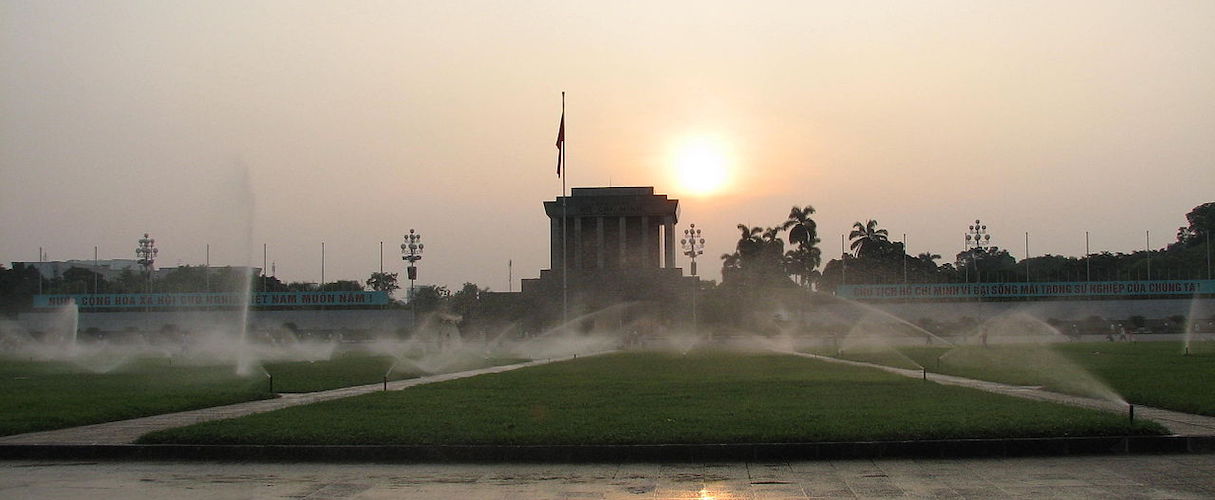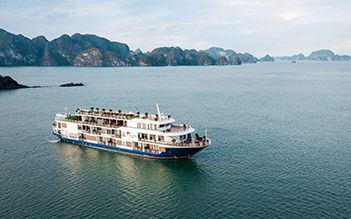Overview
An overview of Ba Dinh Square
If we say that Hanoi is the most famous cultural, economic and political center of the country then Ba Dinh Square is its heart. Ba Dinh Square is the largest square in Vietnam located on Hung Vuong street in the West Gate of Hanoi Ancient Citadel. The west of the square borders Ho Chi Minh Mausoleum, the North borders the Communist Party of Vietnam Central Office, the east borders Ba Dinh Hall and the southeast borders the Ministry of Foreign Affairs.
Ba Dinh Square was built by the French in the early 20th century with the name Puginier - the name of a French priest. The square area was originally a small flower garden with wilderness yards, surrounded by some old government villa buildings.
The name Ba Dinh was placed in 1945. An interesting fact is that the squared was named by doctor Tran Van Lai - the Hanoi mayor of the Tran Trong Kim government but Ho Chi Minh as many people think. The name was inspired by the anti-French insurrection in Ba Dinh, Thanh Hoa in 1886-1887.
Since 1945, Ba Dinh Square has undergone two renamings (Independence Square and Hong Bang Square). Later on, there were opinions about renaming Ba Dinh Square into Independence Square or the September 2nd Square but President Ho Chi Minh still kept the name Ba Dinh Square.

Ba Dinh Square
Ba Dinh Square is not only the most famous square associated with many historical events of the country but also the largest one with a length of 320 meters and a width of 100 meters. The highlight of the scenery in Ba Dinh Square is the green grass plots. However, no one knows exactly the total number of grass plots is.
Many different numbers given are 168, 240, 176 or 168 but the number 240 is still the most recognized one. Few people know that the supplier of all ginger grass and the technology of planting in front of Ba Dinh Square is a southern bonsai artist Nguyen Van Hoa. Despite the construction of many famous works, the journey to plant and care of grass in front of the Ho Chi Minh Mausoleum is the most memorable and proud work in his life.
The significant historical value of Ba Dinh Square
Ba Dinh Square marked many important milestones in Vietnamese history, especially on September 2nd where Ho Chi Minh read the "Declaration of Independence" to establish the People's Republic of Vietnam Republican. The immortal words of the declaration not only meant the affirmation of Vietnam's independence, but it was also the beginning of an independent and liberal era of colonial nations all over the world. Also in this place, after the National Independence Day, September 2nd, 1969, the commemoration of President Ho Chi Minh was solemnly attended by thousands of compatriots and international friends. Then Ho Chi Minh Mausoleum was built in Ba Dinh Square, welcoming many domestic and foreign visitors every day.

Ho Chi Minh Mausoleum
During the past years, Ba Dinh Square has also been regularly chosen to hold many important historical rallies and celebrations of the country such as the welcome meeting of the Central Committee of Vietnam Worker Party and the Government of the Democratic Republic of Vietnam returned to Hanoi after 9 years of long-term resistance war, the unification of the country of September 2nd, 1975, the anniversary of 1000 years Thang Long - Hanoi, etc.




